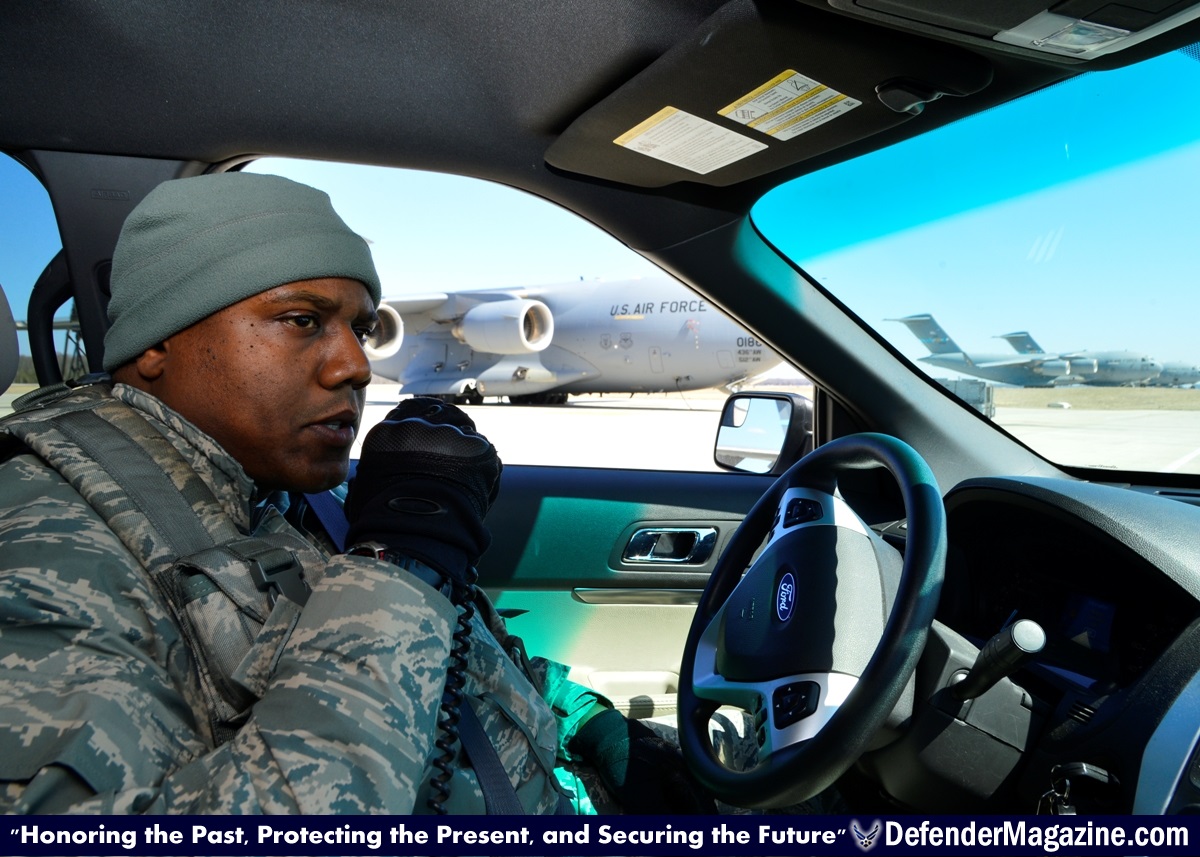Following a year of threats made by ISIS toward American service members, coupled with a recent increase in our military’s FPCON level, attacks at military facilities are still a real concern to those in uniform. It’s time to address the importance of individual situational awareness by reviewing two aspects of situational awareness that military members should be familiar with: detecting surveillance and establishing a baseline for your immediate surroundings.
Detecting surveillance is not a simple task, but there is a simple tool to use when trying to determine if you may be under surveillance. It is kind of like the “recent” files button on your computer that allows for quick access to recently used files. During the training pipeline for our nation’s intelligence professionals they are taught the equation multiple sightings over time and distance. To explain this concept, take a look at these two examples:
Tech. Sgt. Laurance Isaac, 436th Security Forces Squadron bravo flight chief, conducts a radio check on the flight line March 24, 2014, at Dover Air Force Base Del. The 436th SFS conducts regular patrols of the flight line to ensure adequate security and safety. (U.S. Air Force photo/Airman 1st William Johnson)
Example 1: You’re at the grocery store and notice a woman with a lift in her right shoe (a device to compensate for her right leg being shorter than her left). You take notice because as an Air Force Defender it has become second nature to notice things like this, right? About 30 minutes later you see the same woman at another store within the same shopping center. Is this odd? Out of the ordinary? Not in the least.
Example 2: You’re taking your dog to the veterinarian for a 0900 appointment and as you load him into your truck to leave you catch a glimpse of someone sitting in a black Honda Accord (backed in). The driver is “selling” it (often referred to as “cover for action”) by talking on their cell phone. Regardless, you register this into your “recent” file folder and that’s it. You don’t skip a beat, nor do you stop and stare. You register it – that is all. A few hours later at approximately 1430, you catch a glimpse of another black Honda Accord pulling into a parking space seconds after you at a local grocery store, which is 12 miles away from the vet clinic you visited 5 ½ hours before.
Multiple Sightings + Time + Distance = you may be under surveillance.
The second part is establishing a baseline of your surroundings; in other words, knowing what is “normal” at a given location or a particular environment that you visit regularly. The normal baseline in a given situation will differ from one environment to the next and from one person to the next. For example, the baseline at the fitness center on an Air Force Base will not mirror that of a public gym. On base you may find organized PT activities, people wearing uniforms, and people you recognize from your squadron. This likely won’t resemble what you’d find at LA Fitness in downtown Boston.
Once you establish a baseline you can then uncover any anomalies that are present. Anomalies are things that happen, but probably shouldn’t. As you enter your squadron building or even a shopping mall, take in your surroundings and begin establishing your baseline. As you do, your attention should be directed towards the things that stand out – the anomalies. They may or may not be relevant, but you can decide that as you continue building your mental list of the things that don’t quite fit into the environment. As you enter new environments run through a quick list of baseline questions:
- What is going on here?
- What is the overall mood?
- What activities are normal?
- What is the common behavior of the people here?
Lastly, if you do observe an anomaly, what is causing it? Is it a person acting out of sync with the majority, or is something physically out of place? What would cause someone or something to stand out? Once you answer these questions, you can then decide whether action on your part is or is not necessary.
The key to situational awareness lies in the ability to multi-task both brain function and motor skills. Those who stumble through life unaware of their surroundings are often the sheep of society. Lt Col Dave Grossman, author of “On Combat”, describes three types of people in the world: sheep, wolves and sheepdogs. As Defenders, we make up the core of sheepdogs in the Air Force. The wolves, well, they’re the bad guys – the terrorists, rapists, thieves and those who want to harm our flock. Everyone else – they are the sheep. It is up to the sheepdogs to protect the innocent, and a major factor in this effort is to maintain situational awareness. Being cognizant of the people around you, knowing where the exits or fire extinguishers are in a building while identifying anomalies are just the basics. It is a sixth sense that should never be turned off out of convenience; it must always be switched on as you have an inherent obligation to remain vigilant.
By MSgt Peter K. Bowden
ANG Security Forces

